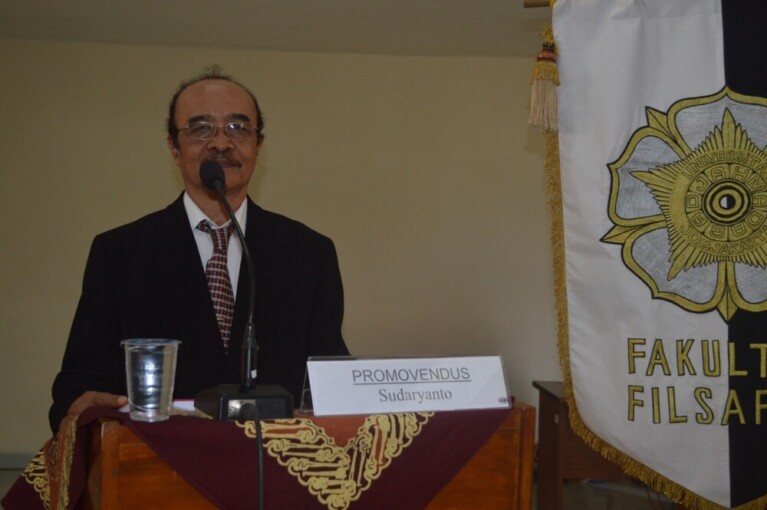
Man can present a thing through verbal or pictorial descriptions. Picture is a visual representation that is natural bearing in mind that verbal is merely a convention.
The term of representation in philosophy of arts has the special meaning of extention of mimesis which means imitation. Mimesis is an early theory that has been adopted by many philosophers. Pictorial representation faced problems when Susanne K. Langer described her philosophy. At that time Langer had not used the term pictorial representation.
Sudaryanto, philosophy doctoral student of UGM, researched into the pictorial representation that is behind the Langer theories as well as to formulate it. In his doctoral promotion on Wednesday (23/11) at Faculty of Philosophy, he said that the Langer philosophy started from the studio instead of the gallery – where artists work.
Sudaryanto added that Langer also adopted the theory of Gestalt to describe the creation process of arts. Picture creation as a presentational symbol has many criteria, which is a picture does not have an independent symbol free from the context. Other criteria are the message in a picture cannot be interpreted through language expression or other expression and two other criteria that refer to Gestalt theories.
The ideas from pictorial representation of Susanne K. Langer is used in the intepretation of description of shadow puppet (wayang purwa) of Yogyakarta style. Sudaryanto concluded that the description of wayang purwa is a visualisation of mythology figures that was derived from Ramayana and Mahabarata stories. Sudaryanto added, referring to Langer, such visualisation means adaptation from virtual memory to virtual space.
“This adaptation is based on the visual analogus formation or the logical form of role and character of the figures in the story,” said Sudaryanto.
He explained that the description of wayang purwa of Yogyakarta style cannot be done all at once, but through gradual abstraction. This process will be adjusted to the logical form of cultural concept and function in a performance as a whole. “The function of wayang purwa description is the projection of role and character that are related directly with the Javanese belief on the concept of refined and unrefined,” said Sudaryanto.


